1. Antiquity (3500-...)
1. Antiquity (3500-...)
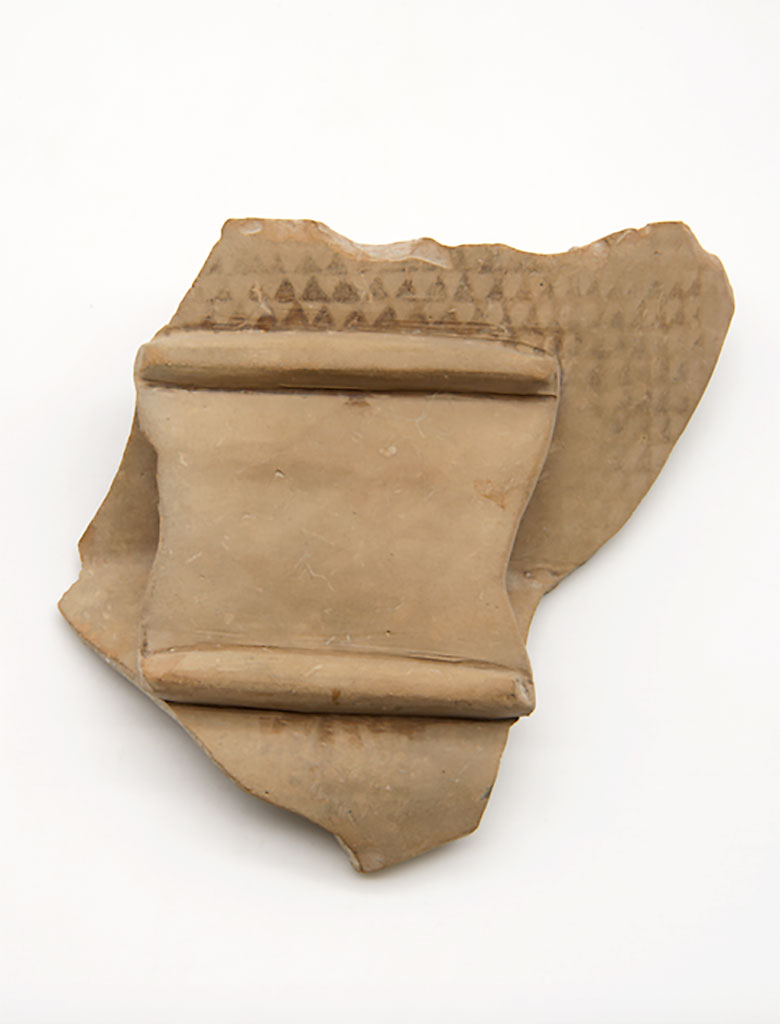
4000 B.C.
4000 B.C.
Earliest evidence in the port area
In the area of the present-day merchant port, archaeological finds dating back to around 4000 BC have been recovered. These finds indicate the presence of a small community of people already living in this area in the Neolithic period. Fragment of painted cup, c.4000BC, found in Taranto at the Scoglio del Tonno (``Tuna Rock``), Taranto, 1899. MArTA Museum Taranto.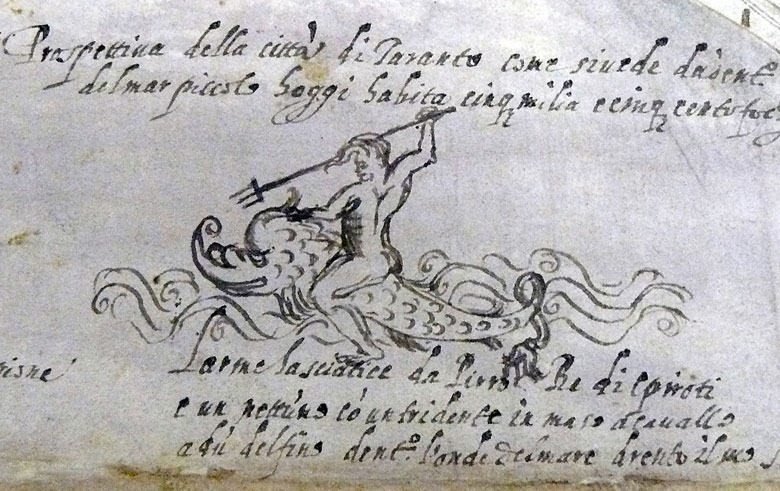
2000 B.C.
2000 B.C.
Mythical founding of the city
Legend has it that the ancient Magna Graecia colony of Taranto was founded by Taras, the son of Poseidon, god of the sea. Taras is said to have come ashore by a watercourse, which he later named the river Tara. While he was performing sacrifices to honour his father Poseidon, a dolphin suddenly appeared to him, a sign of good fortune.A colony of dolphins still inhabits the Gulf of Taranto today. Poseidon riding a dolphin, symbol of the city, detail of a View of Taranto, c. 1580, drawing preserved in the Biblioteca Angelica di Roma (Angelica Library of Rome).
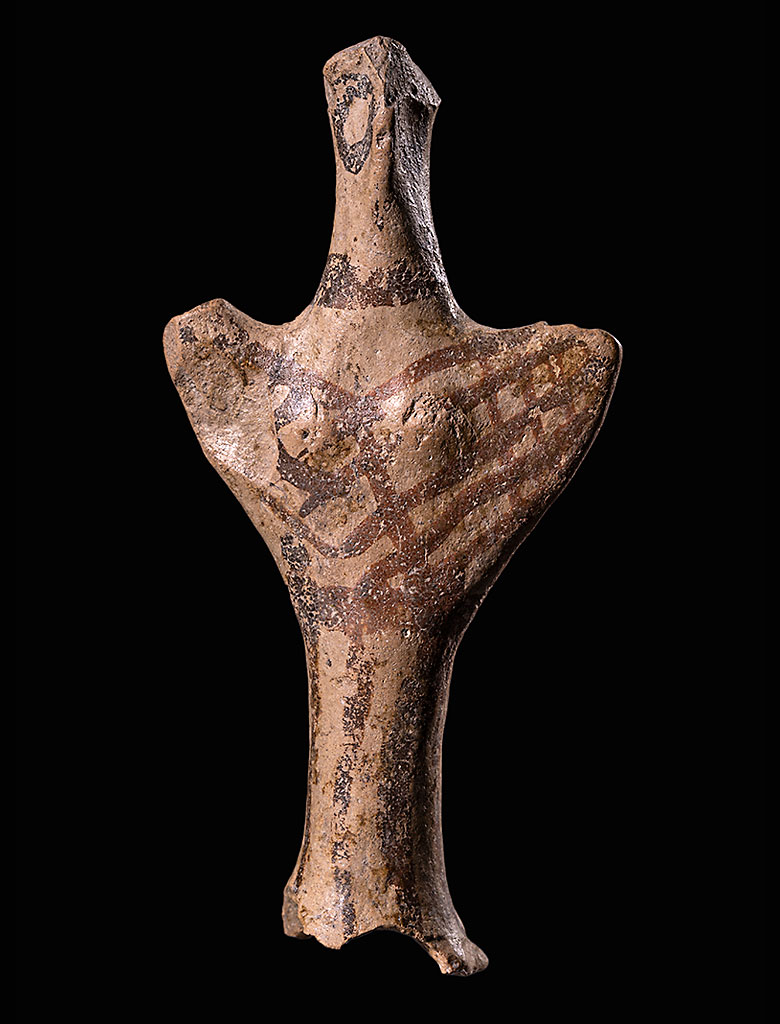
1350 B.C.
1350 B.C.
First settlement by colonists in the area of the present-day merchant port
Excavations in 1899 at the 'Tuna Rock', in the area of the merchant harbour, revealed the existence of Mycenaean material: Mycenaean vases and female idols. These finds clearly indicate that the Greeks had contact with Italic peoples, and their knowledge of the sea routes must have prompted Greek settlers to establish one of their most powerful and flourishing colonies in this area. Idoletto miceneo ritrovato a Taranto, Scoglio del Tonno, 1899. Museo MArTA Taranto, 1375-1350 a.C..2. Magna-Greek period (8th-3rd century BC)
2. Magna-Greek period (8th-3rd century BC)
753 B.C. Founding of Rome.
753 B.C. Founding of Rome.
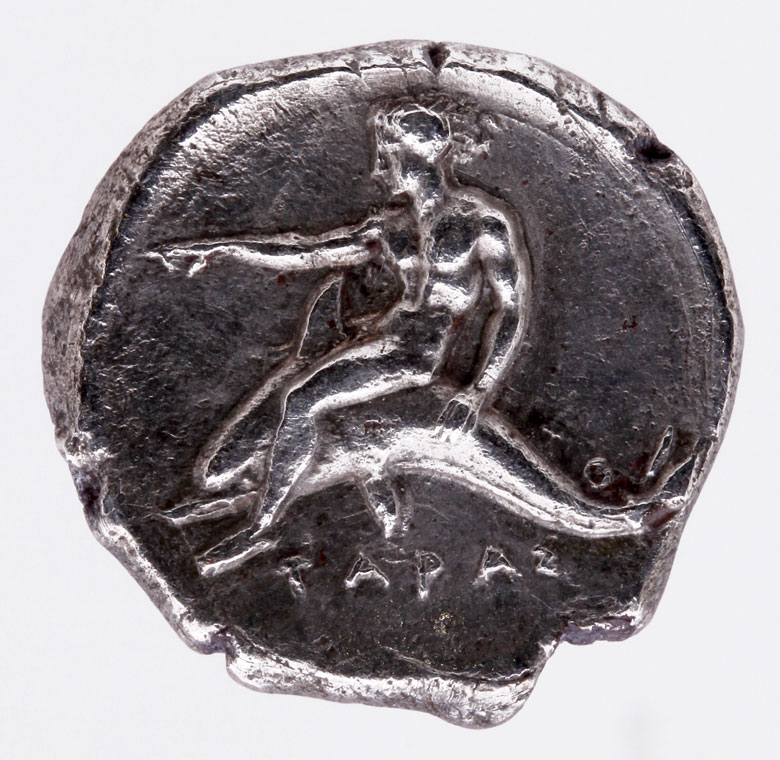
706 B.C.
706 B.C.
The Spartan Phalanthos lands in the territory of present-day Taranto and founds the city of Taras.
With Phalanthos, the real history of Taranto begins. Thanks to him, the first Spartan laws were introduced in ancient Taranto, establishing an aristocratic form of government in the Spartan fashion.The founding of Taranto can be traced back to the favourable conditions of its natural surroundings. Silver stater (coin), 380-345 BC, attributed to the mint of Taranto. From the Contrada Corti Vecchie hoard, recovered in 1916. MArTA Museum Taranto.
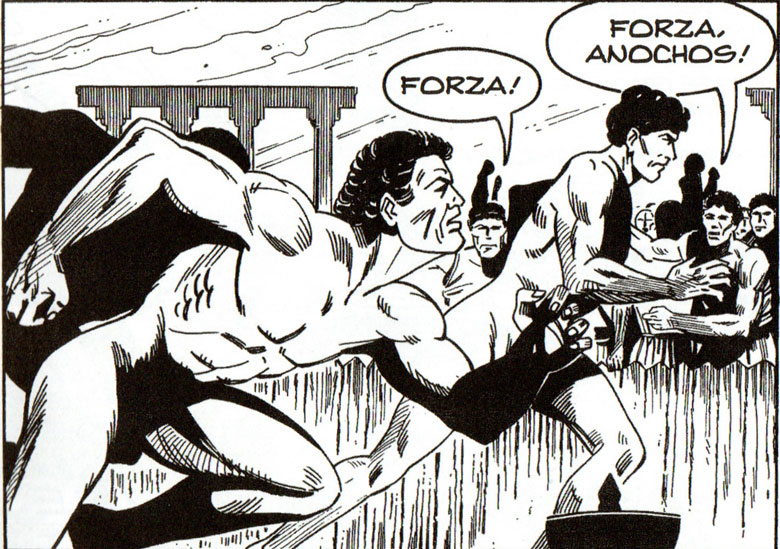
520 B.C.
520 B.C.
Anochos of Taranto wins the stadion race at the 65th Olympiad.
Participating in the Olympics meant that you had to sail a ship to Greece for at least a year. And only the rich could do this. There were probably shipyards, or at least someone who could put a ship in the ideal condition to face a long voyage on the open sea. Illustration by Enzo Nisco from 'La Storia di Taranto Illustrata' (The Illustrated History of Taranto), Scorpione ed., Taranto 2016.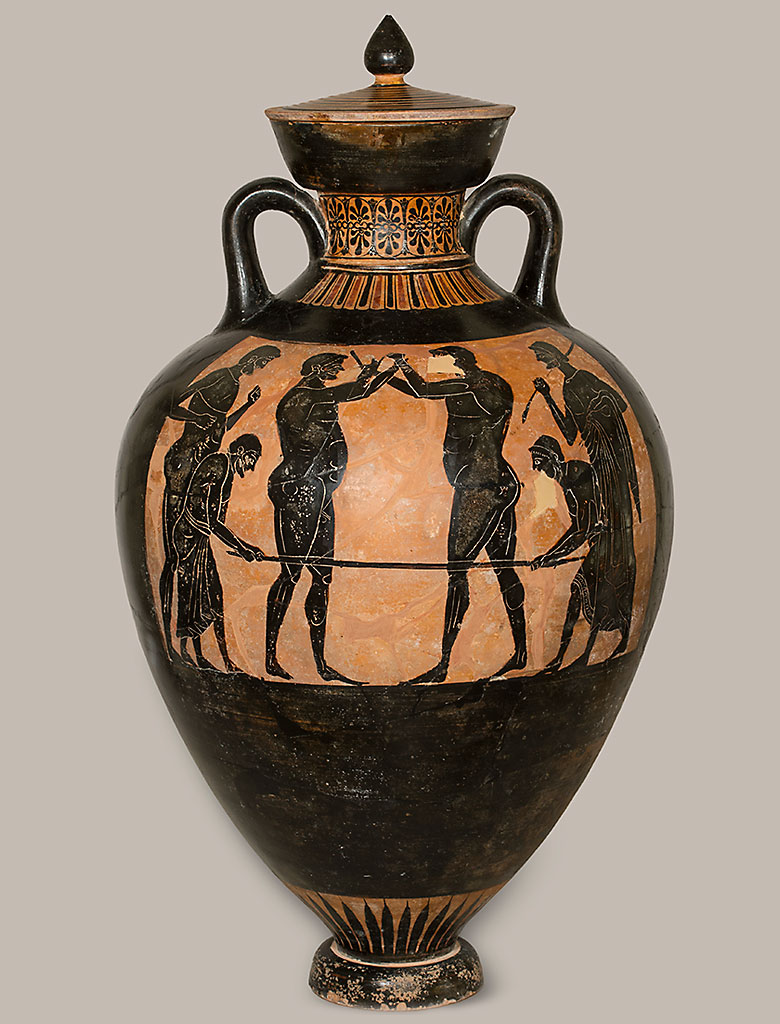
472 B.C.
472 B.C.
Iccus of Taranto, winner of the Pentathlon at the 77th Olympiad
Iccus was a physician and athlete, among the earliest advocates of physical and mental temperance before competitions, which he expressed by abstaining from sexual relations and controlling nutrition, adhering to a simple and frugal dietary regime. Iccus' fame as a gymnastics teacher and physical therapist spread far and wide across the classical world, with a resurgence in popularity in the 16th century thanks to the physician Girolamo Mercuriale (1530-1606). Panathenaic amphora, c. 480 BC, from the 'Tomb of the Athlete'. MArTA Museum Taranto.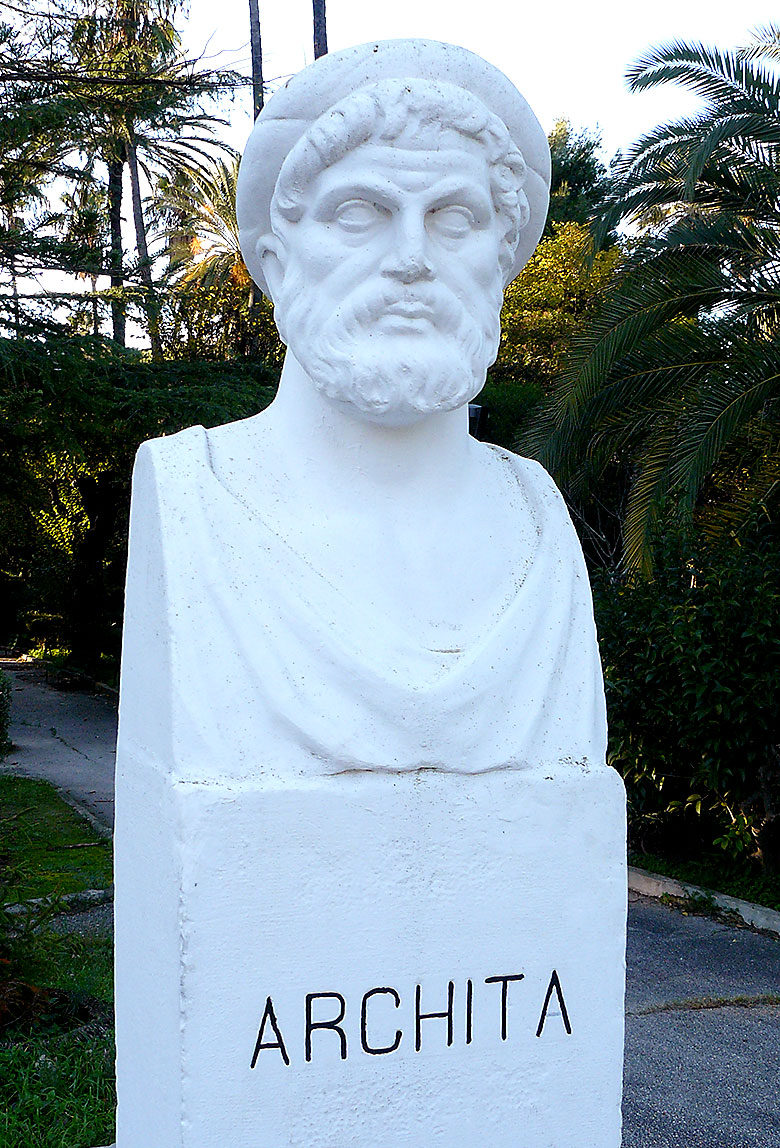
428 B.C.
428 B.C.
Archita, philosopher, mathematician and accomplished politician, is born in Taranto.
Archita (428-360 BC) led Taranto to its greatest splendour. He was elected 'Strategist' seven times, i.e. leader and governor of the city. He boosted maritime trade and established relations with several coastal cities in Istria, Greece and North Africa. By constructing monuments, temples and buildings, he brought new lustre to the city and made it the richest and most important metropolis of Magna Graecia. Busto di Archytas, Villa Peripato, Taranto.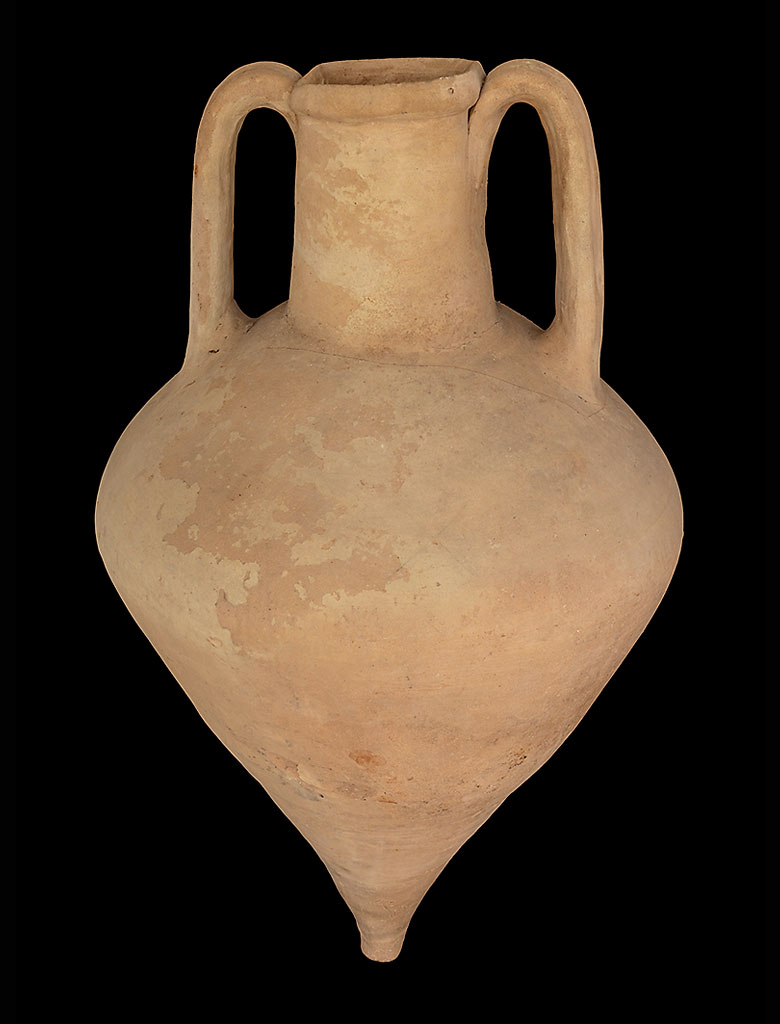
Vth-IVth cen. B.C.
Vth-IVth cen. B.C.
Extensive commercial ties with the main Ionian cities
The Tarentines had frequent exchanges of trade with Syracuse, especially during the rule of Dionysius I (430-367 BC) and Dionysius II (397-343 BC), and also friendly trading relations with Locri, Crotone, Sybaris, Metapontum and Heraclea, which grew out of a colony of Tarentines. In this period, Tarentine coinage found its way not only into Magna Graecia, but also reached Picenum and Etruria. Outside the Italic area, coins minted in Taranto have also been found in Lipari and Kefalonia, in Greece. 'Corinthian B' transportation amphora, 3rd century BC, from Korkyra (now Corfu). Recovered at the corner of via Dante and via Polibio, Rione Italia, Taranto, 1958. MArTA Museum Taranto.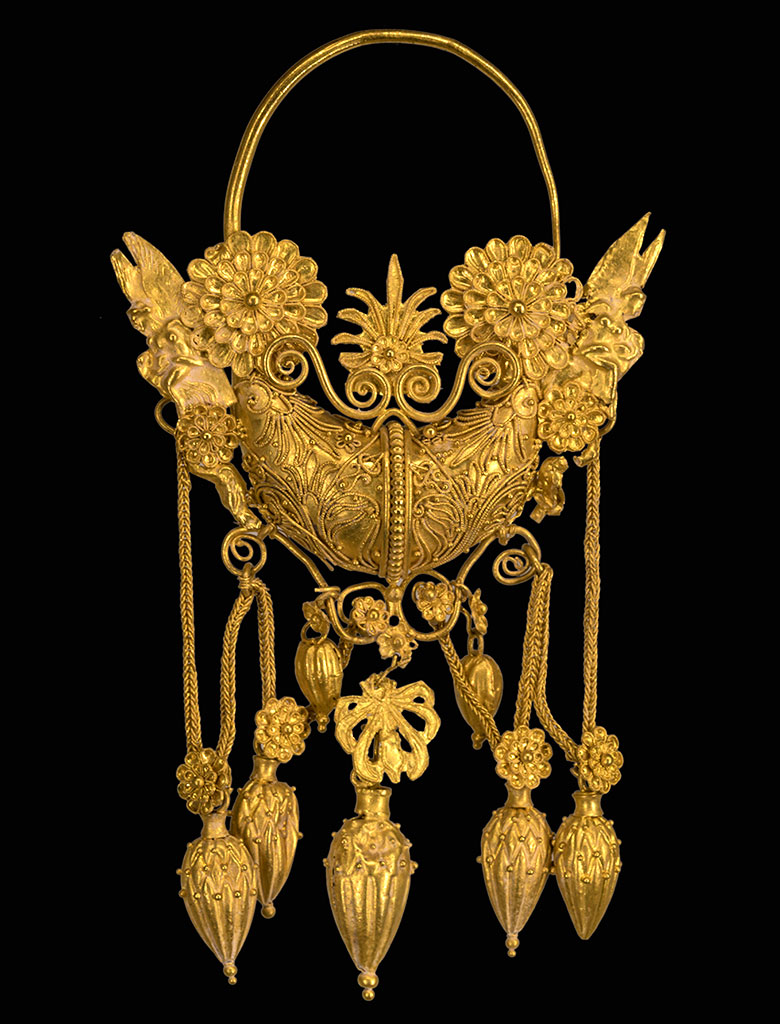
272 B.C.
272 B.C.
Taranto surrenders to Rome.
Pyrrhus withdraws to Epirus and Taranto surrenders to Rome, but retains its own legal system. The poet Leonidas (320-260 BC) abandons his beloved homeland, to which he later dedicates nostalgic odes. The boy Livy Andronicus (c. 280-200 B.C.) is brought to Rome as a war slave, later becoming a poet and playwright. By translating the Odyssey into Latin he helped to spread a taste for Greek culture among the Romans. During these years, alongside the manufacture of gold ornaments, the production of pottery and silver items also flourished in Taranto. Gold ship earring, second half of the 4th century BC. Recovered at Via Umbria, Taranto, 1958. MArTA Museum Taranto.3. Imperial Era
3. Imperial Era
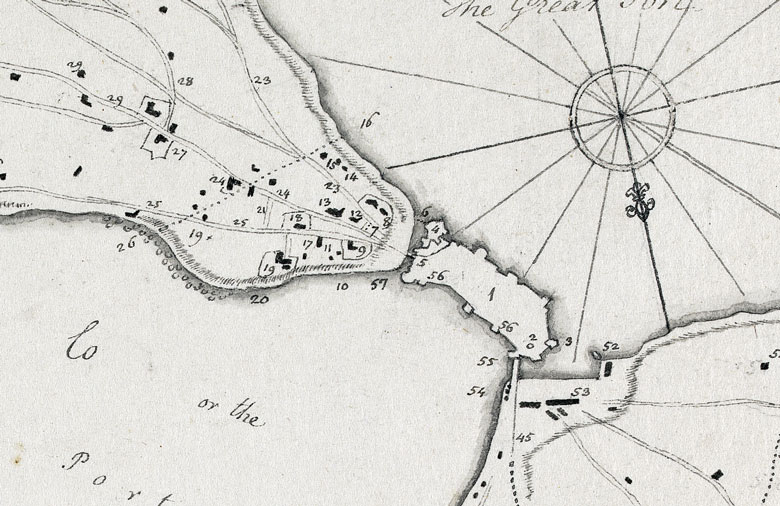
212 B.C.
212 B.C.
The Romans conquered Taranto during the Second Punic War.
Hannibal (247-183 B.C.) was fighting to defend Taranto. In order to outwit the besieging Romans, he brought ships into the Mar Piccolo from the Mar Grande by transporting them overland. This route has been handed down through time, so much so that it can also be seen on the 18th-century map by Englishman Henry Swinburne (1743-1803), who sketched points 26 and 16. Detail of a Map of the Ports and Surroundings of Taranto, Henry Swinburne, 1777-1779, Yale Center for British Art, Paul Mellon Collection - Public domain, https://collections.britishart.yale.edu/catalog/tms:29957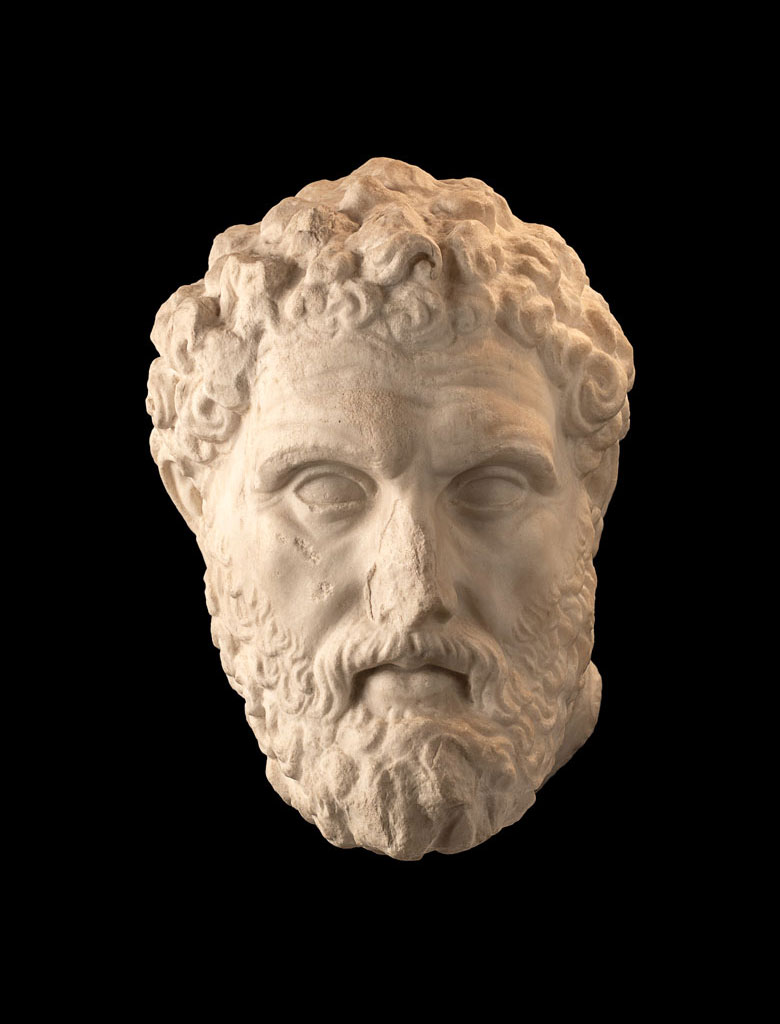
209 B.C.
209 B.C.
Taranto is punished by Fabio Massimo for its alliance with Hannibal.
The looting of Taras yields 83,000 pounds ((c. 38,000kg) of gold, which gives an idea of the city's wealth. Fabius Maximus had Lysippus' colossal statue of Heracles (the mythical ancestor of the Fabian clan, and considered by the Tarantines to be the ancestor of Phalanthos, the city's founder) taken to the Capitol in Rome. The demigod Heracles was also seen as one of the divine protectors of commerce. Marble Head of Heracles, 1st century BC. Found in Taranto, no information regarding discovery. MArTA Museum Taranto.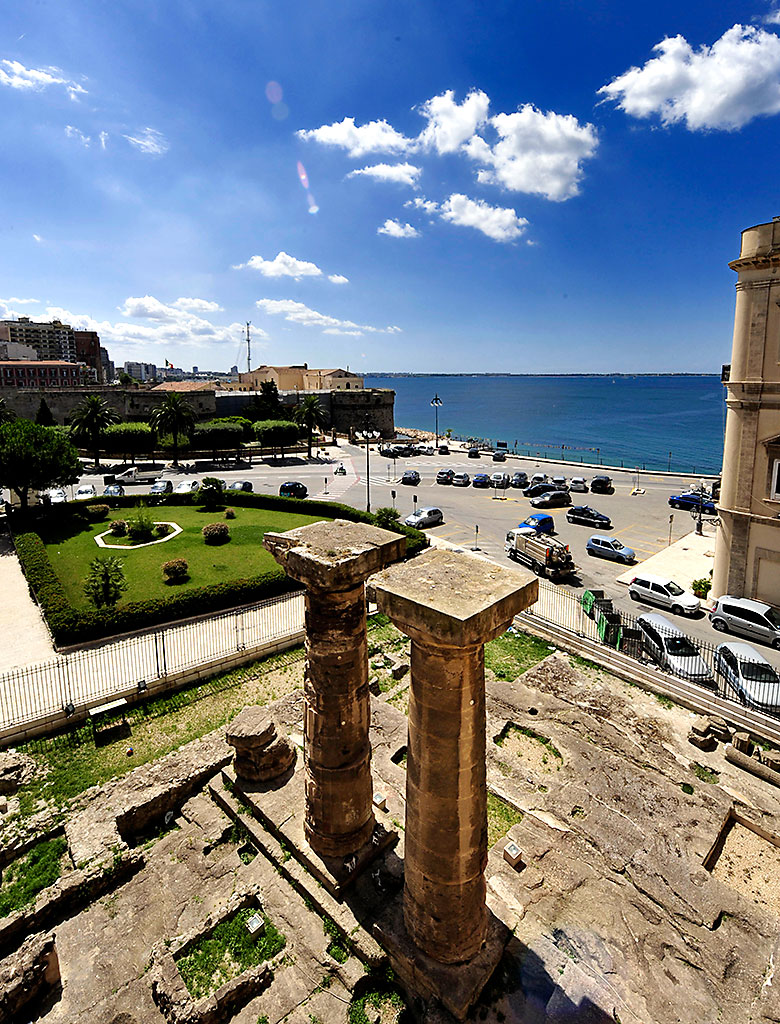
125 B.C.
125 B.C.
Taras beomes a Roman colony (Colonia Neptunia) and takes the name Tarentum.
The Greek historian Polybius, who lived in the 2nd century B.C., writes in Book X of his Histories: 'in the port and city of Taranto all the trade and commerce with the inhabitants of that region of Italy takes place'. Among the goods traded was salted fish, prepared in a way that is described by the Athenian physician Euthydemus (2nd century BC) in his treatise 'On Salted Fish'. Doric columns from the Temple of Poseidon, Tarento, 6th century BC. Photo by Sergio Malfatti.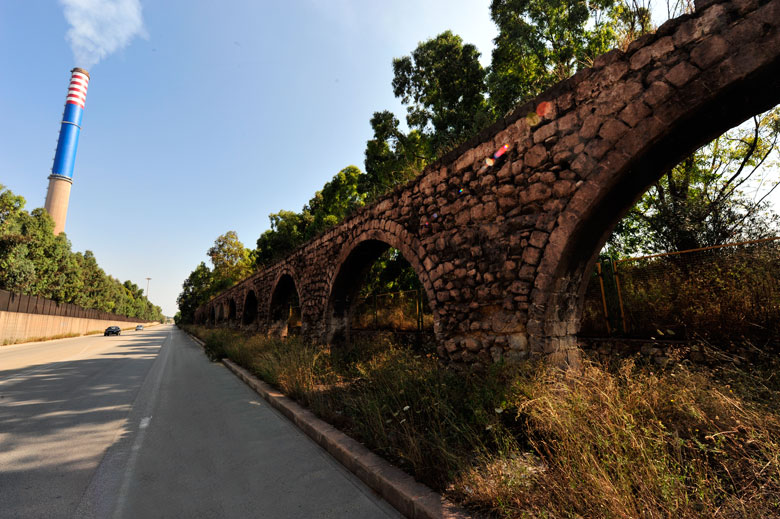
Ist cen. B.C.
Ist cen. B.C.
The Triglio aqueduct supplies water to the harbour for replenishing ships.
In the period following the foundation of the Roman colony Neptunia, between the 1st century B.C. and the 1st century A.D., the Triglio aqueduct was built to supply water to the villas on the outskirts of Taranto. The aqueduct also reached a jetty on the Mar Grande to supply the ships moored in the port. Triglio Aqueduct, Taranto, 1st century BC. Photo by Sergio Malfatti.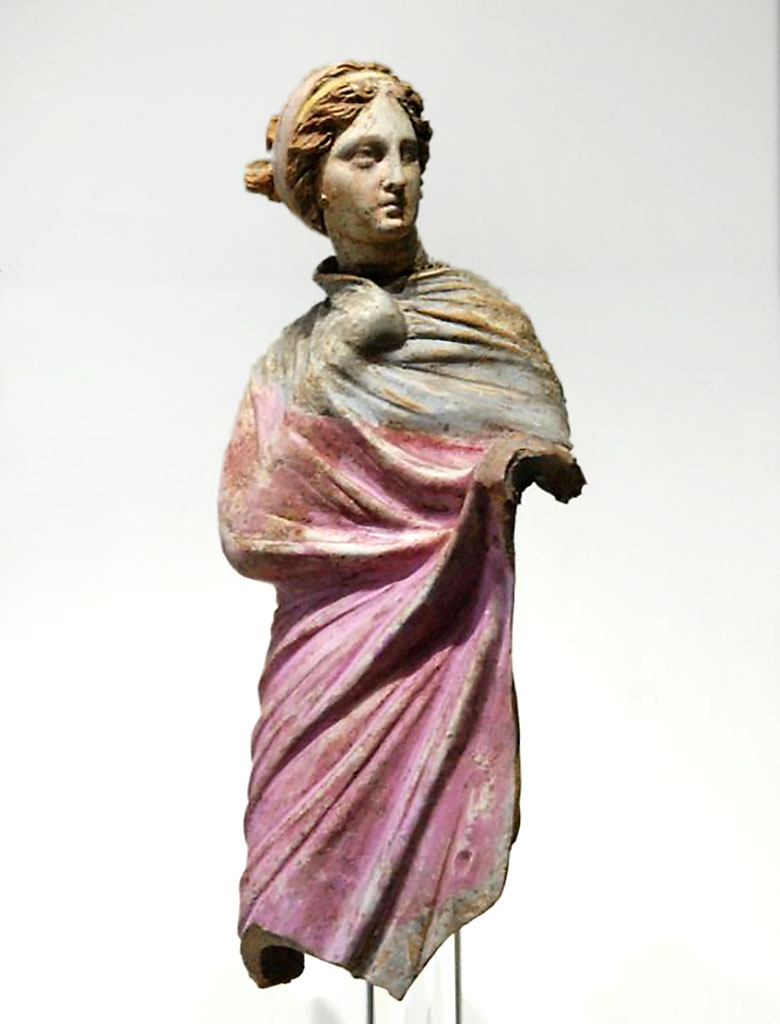
Ist cen. B.C.
Ist cen. B.C.
Exports during the Roman Empire.
During this period, wine, breeding rams, handcrafted woollen goods, and purple-dyed fabrics for women's clothing left the port of Taranto. The vats for manufacturing the purple were located along the eastern shore of the Mar Piccolo, near Villa Peripato, where a hill of shards ('Munt d' l' Cueccl') still stands, the result of processing the precious molluscs, from each of which a single drop of purple was extracted. Statuette of a female figure wearing a purple mantle, 4th century BC, MArTa Taranto Museum.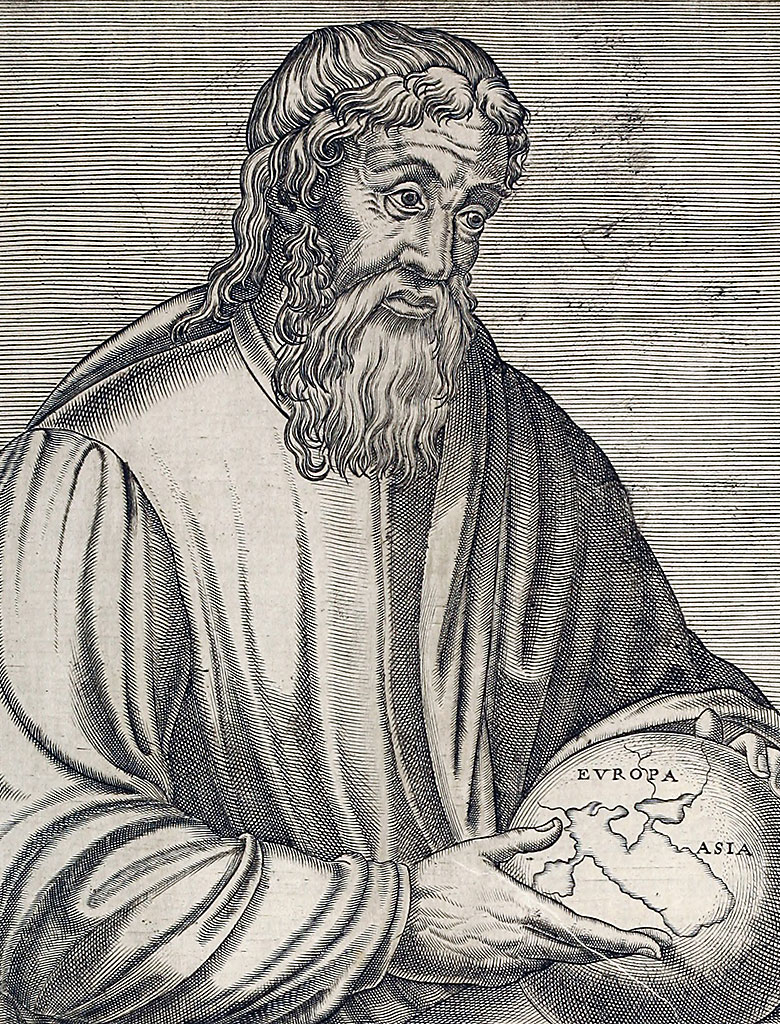
Ist cen. A.D.
Ist cen. A.D.
The Greek geographer Strabo describes the port of Tarentum in the imperial era.
In Book VI of his Geography, Strabo (60 B.C. - c. 24 A.D.) describes the harbour area as follows: 'While most of the Gulf of Tarentum is without ports, at Tarentum there is a very fine and wide harbour with a perimeter of 100 stadia, enclosed by a large bridge'. Strabo, in a 16th-century engraving by André Thévet, public domain, via Wikimedia Commons https://commons.wikimedia.org/wiki/File:Strabo.jpg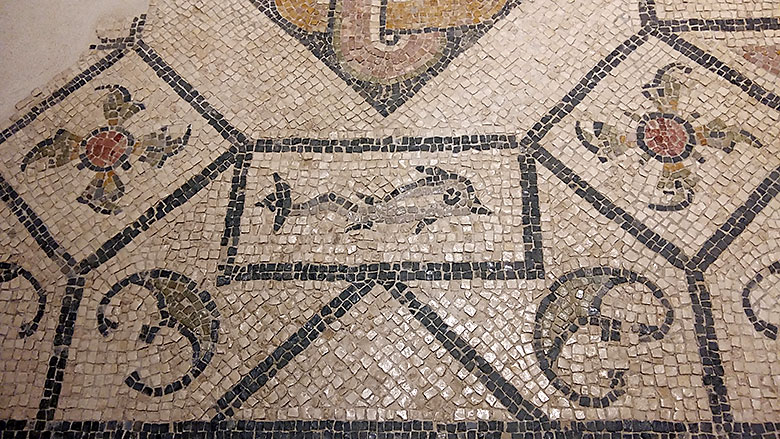
Ist cen. A.D.
Ist cen. A.D.
The fame of Taranto's maritime entrepreneurs.
The Latin writer Petronius (27-66 A.D.) has, as one of the main characters in his masterpiece 'Satyricon', the Tarantine Lica, a maritime entrepreneur trading along the Italian coast: 'a good man, who besides being master of this ship and some farms, has a trading business and carries a cargo to sell'. We may infer from this description the role of the Tarentine port in the imperial period. Floor mosaic, 2nd century A.D., from ancient patrician villas in Taranto. MArTA Museum Taranto.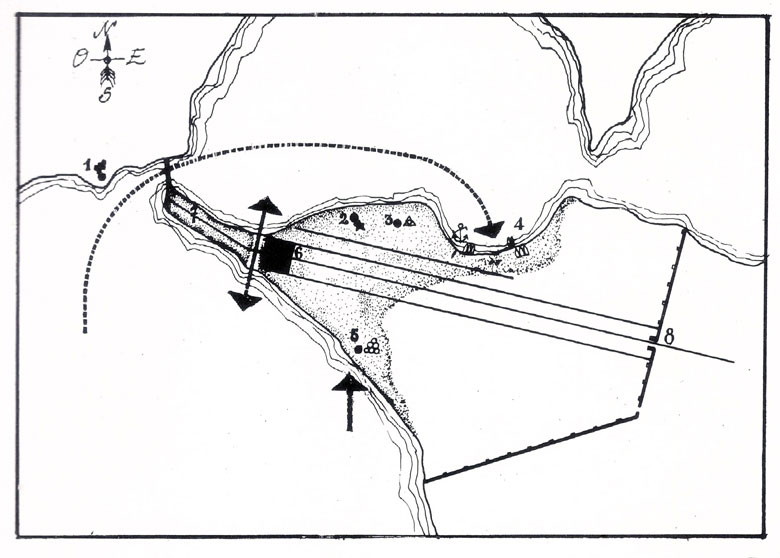
IInd cen. A.D.
IInd cen. A.D.
The historian Appian of Alexandria speaks of two ports.
The historian Appian of Alexandria († c. 165 A.D.) mentions two ports: 'The harbours of Taranto face towards Borea, entering it from the side of the sea', i.e. to the north, entering from the Mar Grande. This is probably the area near the present stone bridge, where the Scoglio del Tonno (Tuna Rock) once stood, and artefacts ranging from the Neolithic to the Byzantine period, and beyond, have been found. In the reconstruction: 1) Protohistoric settlement at the Scoglio del Tonno; 2) Probable location of warehouses; 3) Purple workshops; 4) Main landing in the S. Lucia cove; 5) Pottery factories; 6) Agora; 7) Acropolis; 8) Temenides Gate and Via Plateja. Reconstruction of the position of the port up to the 6th century AD, from AA VV, Il porto di Taranto (The Port of Taranto), Consorzio Area Sviluppo Industrale (Consortium for Industrial Development), Rome 1978.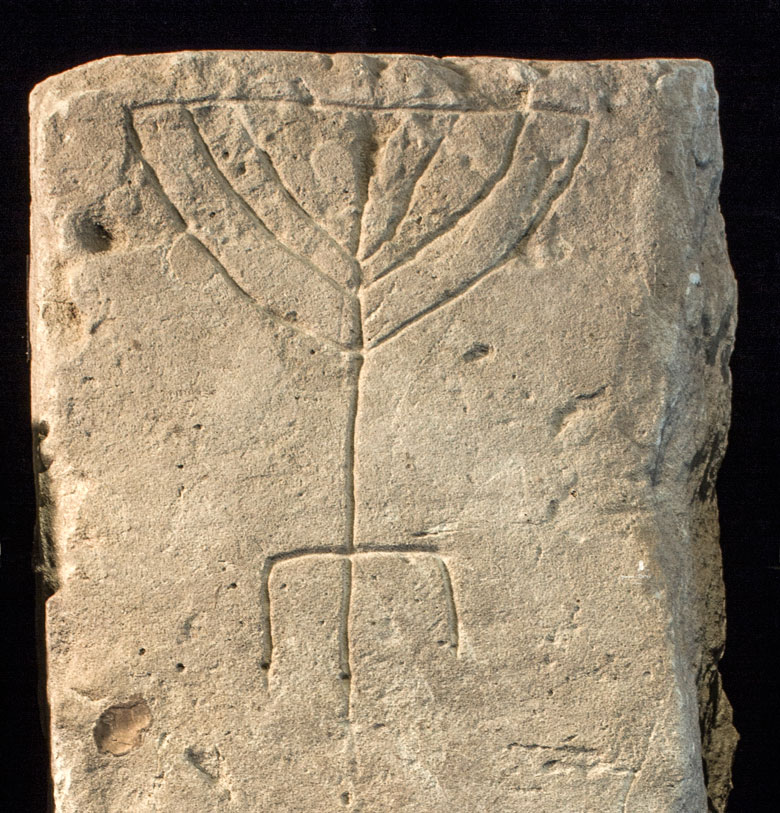
IVth cen. A.D.
IVth cen. A.D.
Presence of a Jewish community in Taranto.
It has been suggested that the small Jewish community was linked to the trade routes to and from the eastern Mediterranean in this period. Indeed, evidence of North African and Eastern goods being imported has been found.In 1167, according to the Spanish geographer and explorer of Jewish culture Beniamino di Tudela (1130-1173), Taranto was home to a Jewish community of 200 families. Limestone (locally known as ``carparo``) stele with Hebrew inscription, 6th - 8th century A.D. Recovered in Strada di S. Lucia, 1884. MArTa Taranto Museum.
4. Byzantine - Gothic - Longobard period
4. Byzantine - Gothic - Longobard period
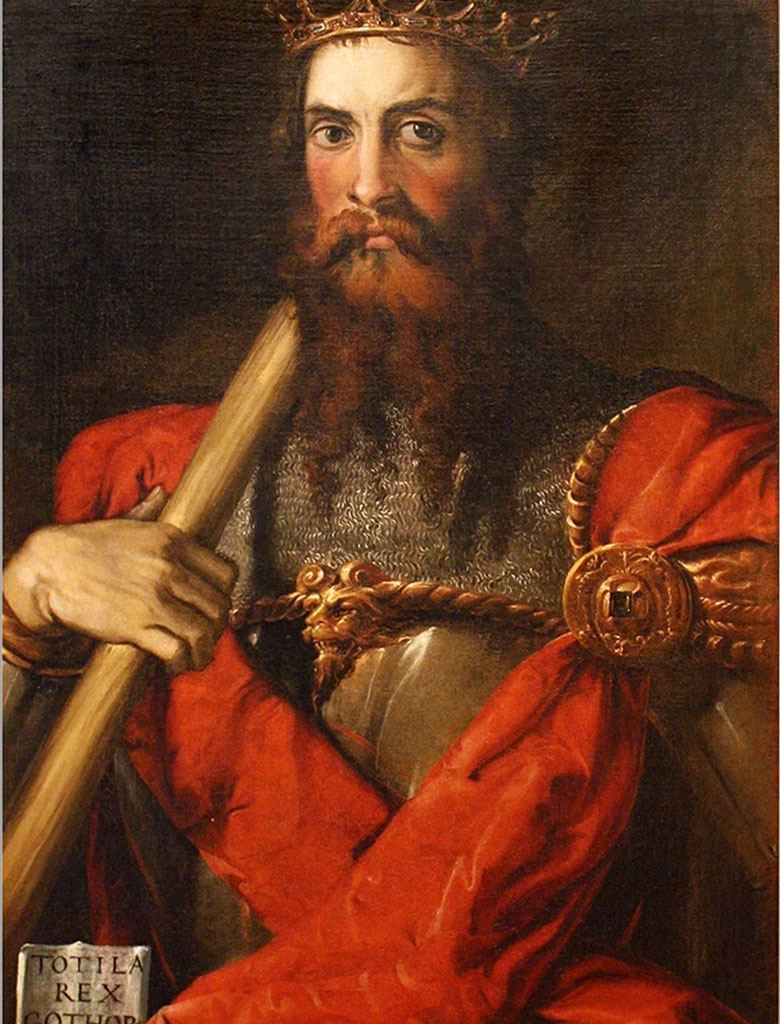
542 AD
542 AD
The Ostrogoth king Totila occupies Apulia.
In his Istoria tarentina (History of Taranto), the historian Merodius (1590-1684) reports that Totila (516 ca-552) was struck by the fertility of the Tarantine soil, the mildness of the climate, and the large and safe harbour, so he decided to settle for a while in this corner of Apulia, making Taranto the most important Gothic stronghold. Totila, portrait by Francesco Salviati, 1549 https://commons.wikimedia.org/wiki/File:Francesco_Salviati_-_Portrait_of_Totila,_c._1549.jpg Francesco de' Rossi, Public domain, via Wikimedia Commons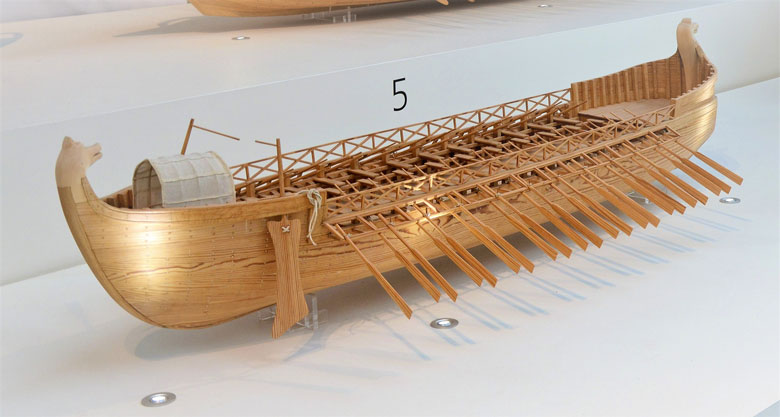
7th cen. AD
7th cen. AD
Struggle between the Lombards and the Byzantines. The port has a purely military function.
Emperor Constans II (630-668), in order to limit the influence of the Duchy of Benevento over Apulia, arrived from Athens with a powerful fleet consisting of troop ships and cavalry transports. The dromon was the warship in use at this time; it was a descendant of the less agile Roman liburna, and crewed by 100 oarsmen, with 50 landing troops, plus a dozen sailors. In practice, it could carry about 160 men. Model of a Byzantine Dromon, Museum für Antike Schiffahrt (Museum of Ancient Maritime History), Mainz (Germany) https://commons.wikimedia.org/wiki/File:1-10_model_reconstructions_of_Roman_ships,_5-_Dromon_of_the_Byzantine_navy_(10-12th_centuries_AD),_left-_Bireme_of_the_Neumagen_Type_(220_-_230_AD),_Museum_f%C3%BCr_Antike_Schiffahrt,_Mainz_(34729616210).jpg Carole Raddato from FRANKFURT, Germany, CC BY-SA 2.0, via Wikimedia Commons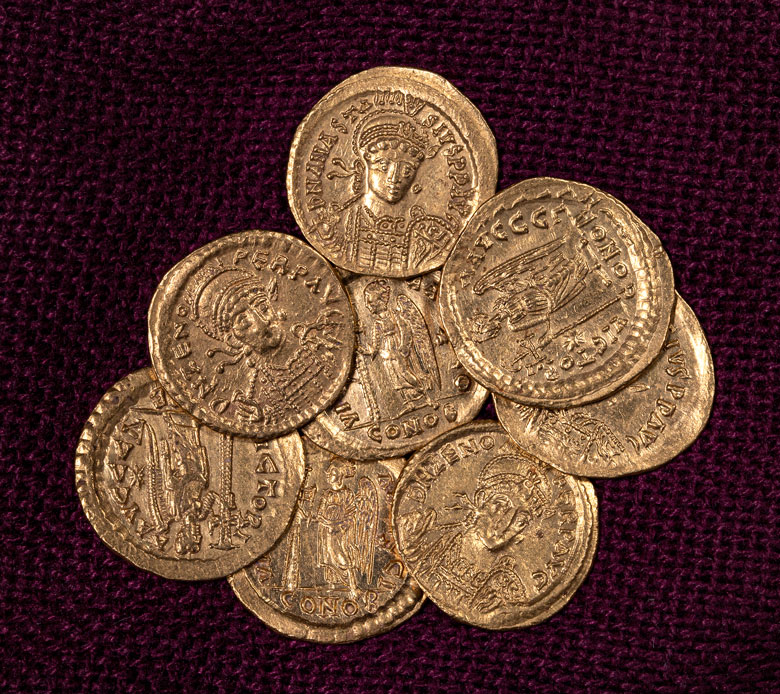
7th cen. AD
7th cen. AD
Byzantine presence confirmed by the discovery of gold solidi (coins)
The Byzantine presence was confirmed by the discovery in Pythagoras Street of a series of Byzantine coins, i.e. gold solidi dating back to the emperors Leo I (457-474), Zeno Isauricus (474-491) and Anastasius I (491-518).The gold solidus, weighing approximately 4.5 grams, was the basis of the economic system of the time. Hoard of coins consisting of 8 gold solidi, 5th-6th century AD. Recovered at the corner of via Nitti and via Pitagora, Taranto, from the D'Ayala Valva property, 1915. MArTa Taranto Museum.
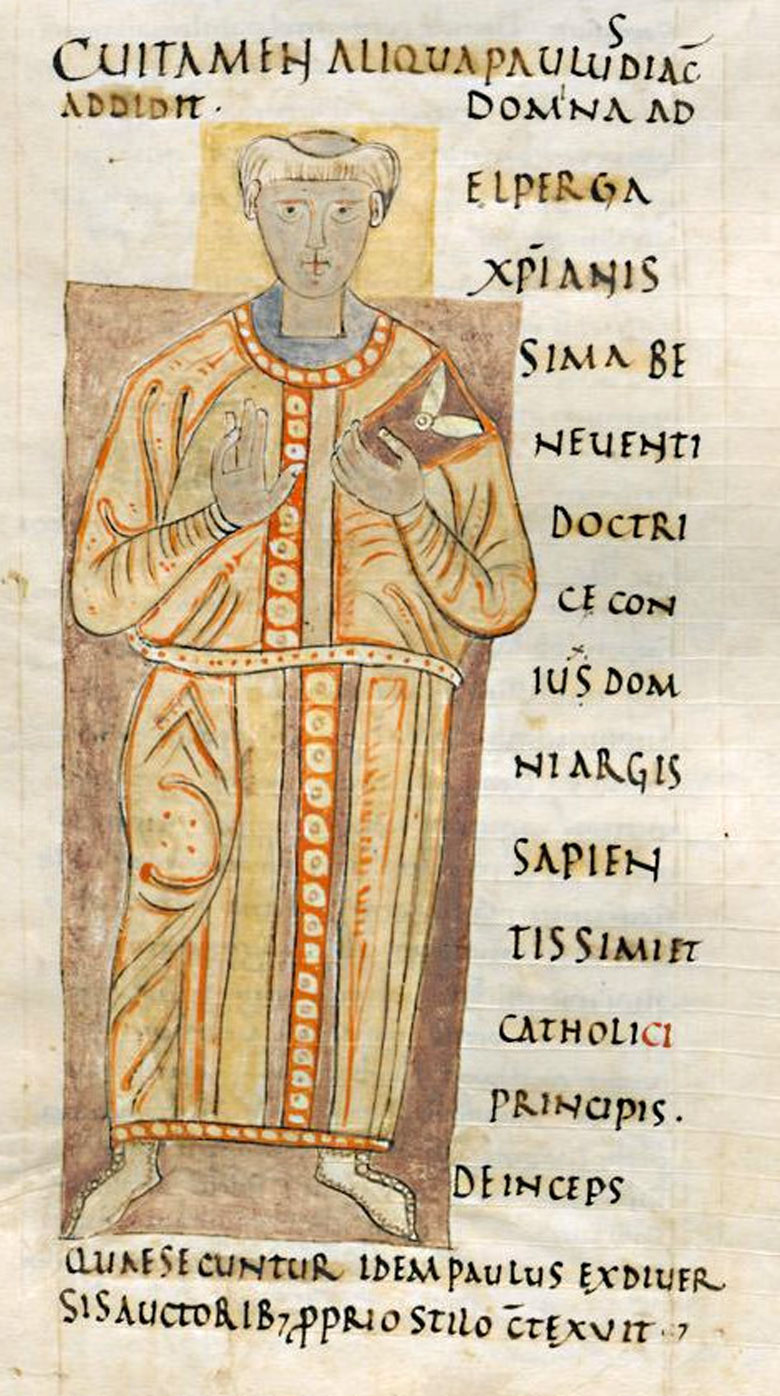
8th cen. AD
8th cen. AD
The monk Paul the Deacon counts Taranto among the richest cities in the region.
Paul the Deacon (c.720-799) from Francisci Antonii Zachariæ, Societatis Jesu Excursus litterarii per Italiam ab anno 1742 ad annum 1752 (Society of Jesus Literary Currents in Italy from the year 1742 to 1752), Volume 1., originally published by Remondiniano Typographio (Remondini Typography), 1754, p. 219. https://commons.wikimedia.org/wiki/File:PaulusDiaconus_Plut.65.35.jpgPulic domain - Wikimedia Commons
Paolo Diacono (720 ca-799) da Francisci Antonii Zachariæ Societatis Jesu Excursus litterarii per Italiam ab anno 1742 ad annum 1752. Volumen 1., ex Remondiniano Typographio, 1754, p. 219. https://commons.wikimedia.org/wiki/File:PaulusDiaconus_Plut.65.35.jpg Pubblico dominio - Wikimedia Commons
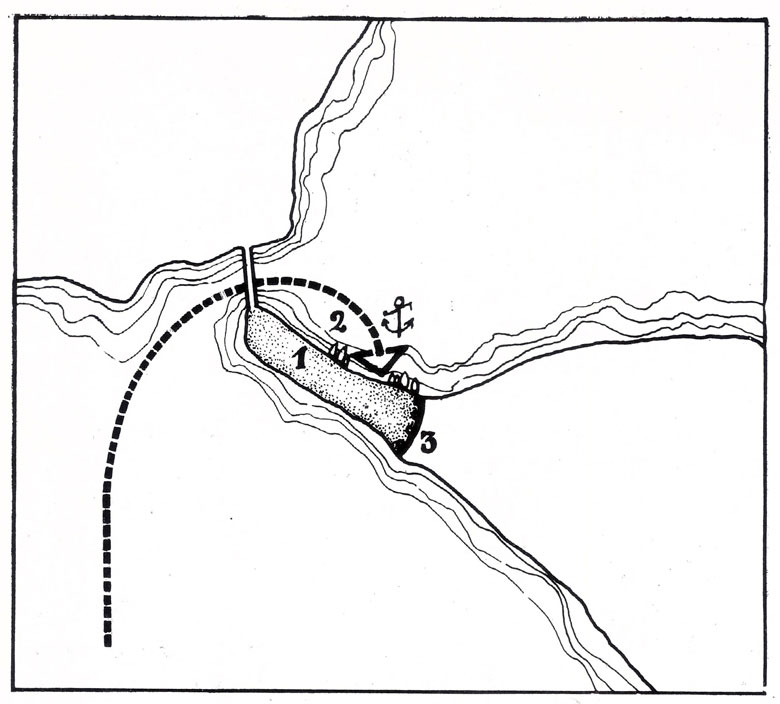
780
780
The Byzantines begin the construction of the fortress to protect the city and port
This early fortification consisted of tall, narrow towers, from which they fought with spears, arrows, stones and boiling oil. It protected against attacks by the Saracens and the Venetian Republic.1. Inhabited area; 2.Harbour; 3.Fortified line and cutting through the isthmus. Map of the port between the 6th century and 927. 1) Inhabited area; 2) The Port; 3) Fortified line to the east of the city, from AA VV, Il porto di Taranto (The port of Taranto), Consorzio Area Sviluppo Industrale (Consortium for Industrial Development), Rome 1978.
5.Saracen period (c.840-880)
5.Saracen period (c.840-880)
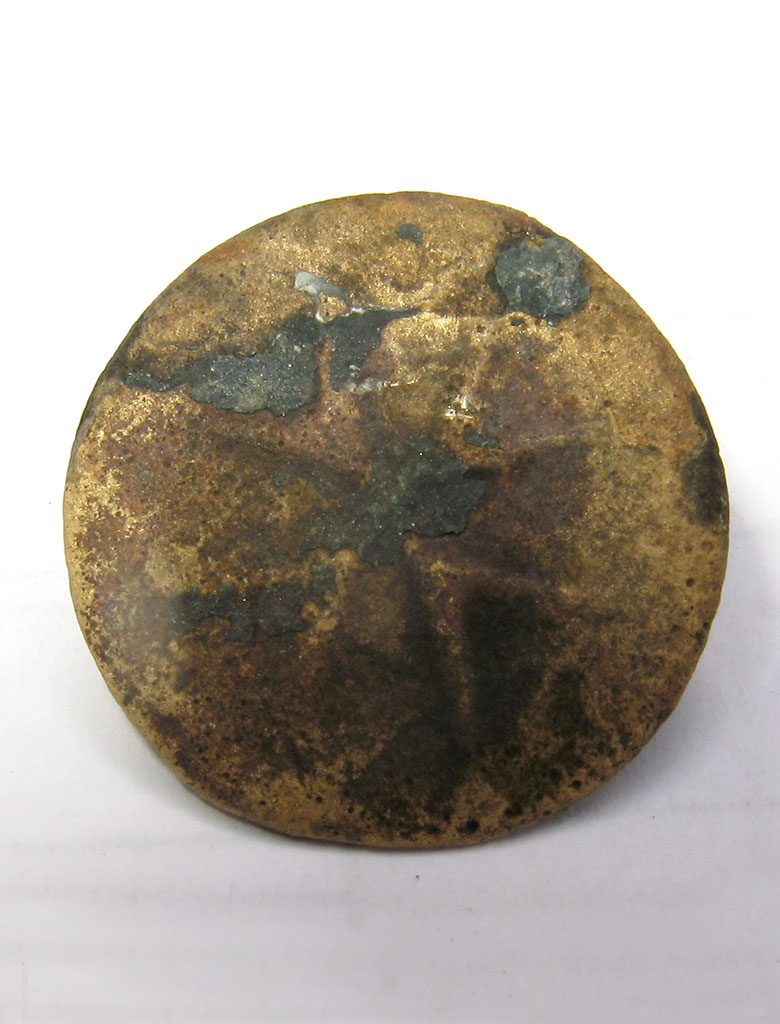
840
840
Taranto is conquered by the Saracens. Described as a bustling and rich city.
The anonymous Lombard writer of the 'Chronicon Salernitanum' (Salerno Chronicle) visited the city in the autumn of 839, shortly before the Saracen conquest, and describes Taranto as a city deeply linked to the sea, with numerous taverns and markets, where food, wine and pottery were sold. He notes the presence of many merchant ships from Amalfi. The gold button found during recent excavations where the islet of S.Nicolicchio used to be - now part of the port area - bears the engraving of the Maltese cross, symbol of the maritime republic of Amalfi. Gold button with embossed Maltese cross, date uncertain, Capo Rondinella, Taranto. National Superintendency for Underwater Cultural Heritage, Taranto.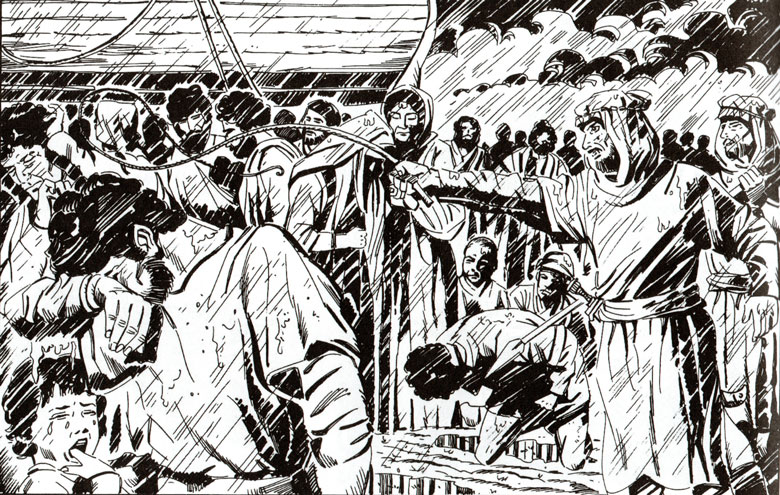
c. 864
c. 864
The port was a gathering place for raiding pirates and a departure point for slaves.
Taranto became a place for collecting loot plundered in Apulia as well as slaves, who were embarked here on ships that transported them to the Muslim East.The monk Bernard of Bordeaux, travelling to the Holy Land, writes in his Itinerarium (travel guide): ``We walked to the port of the city of Taranto where we found six ships, in which there were nine thousand Christians from Benevento taken prisoner. In two ships that left the port first, bound for Africa, there were three thousand prisoners, the other two that left later bound for Tripoli, similarly carried another three thousand``. llustration of the Arab deportation by Enzo Nisco from ``La Storia di Taranto Illustrata`` (The Illustrated History of Taranto), Scorpione ed., Taranto 2016.
6.Byzantine period
6.Byzantine period
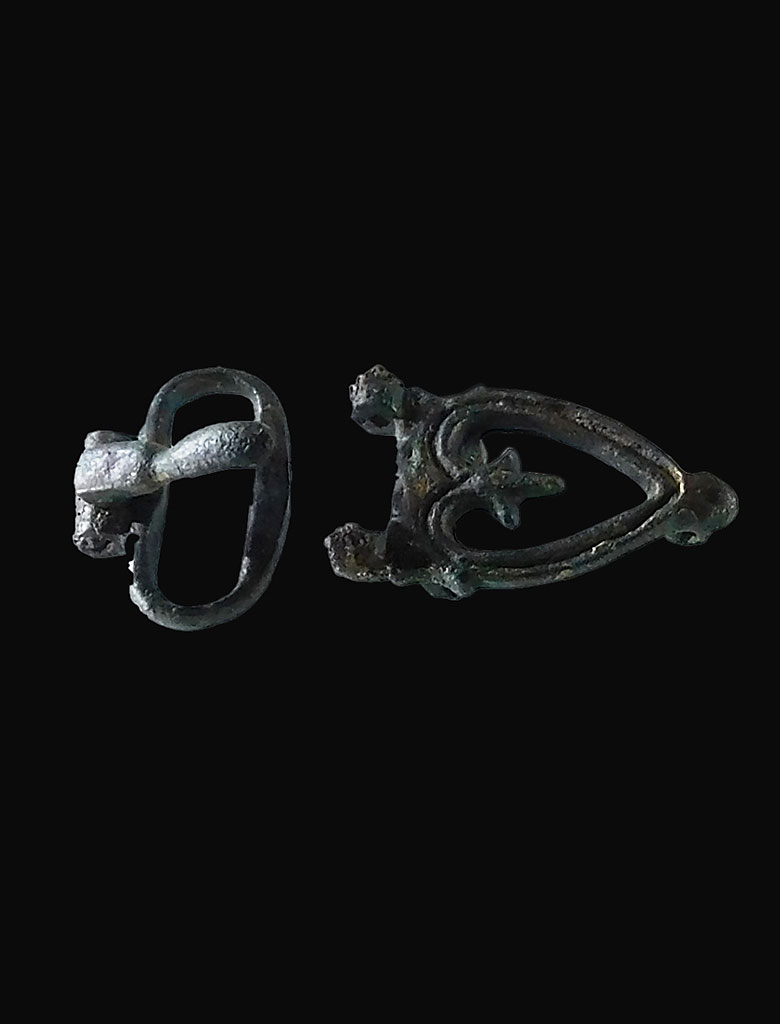
880
880
The Byzantine army of Basil I the Macedonian reconquers Taranto.
In 888, Deacon Dauferio of Montecassino, legate of the Prince of Capua, Atenolfo I (†910), embarked from the port of Taranto for Constantinople. It is credible to assume trading contacts with the capital of the Byzantine Empire in these years, which seems to be confirmed by the few archaeological finds datable to this period, principally gold jewellery and bronze buckles. Bronze buckle traceable to the Byzantine world, 7th century. MArTA Taranto Museum.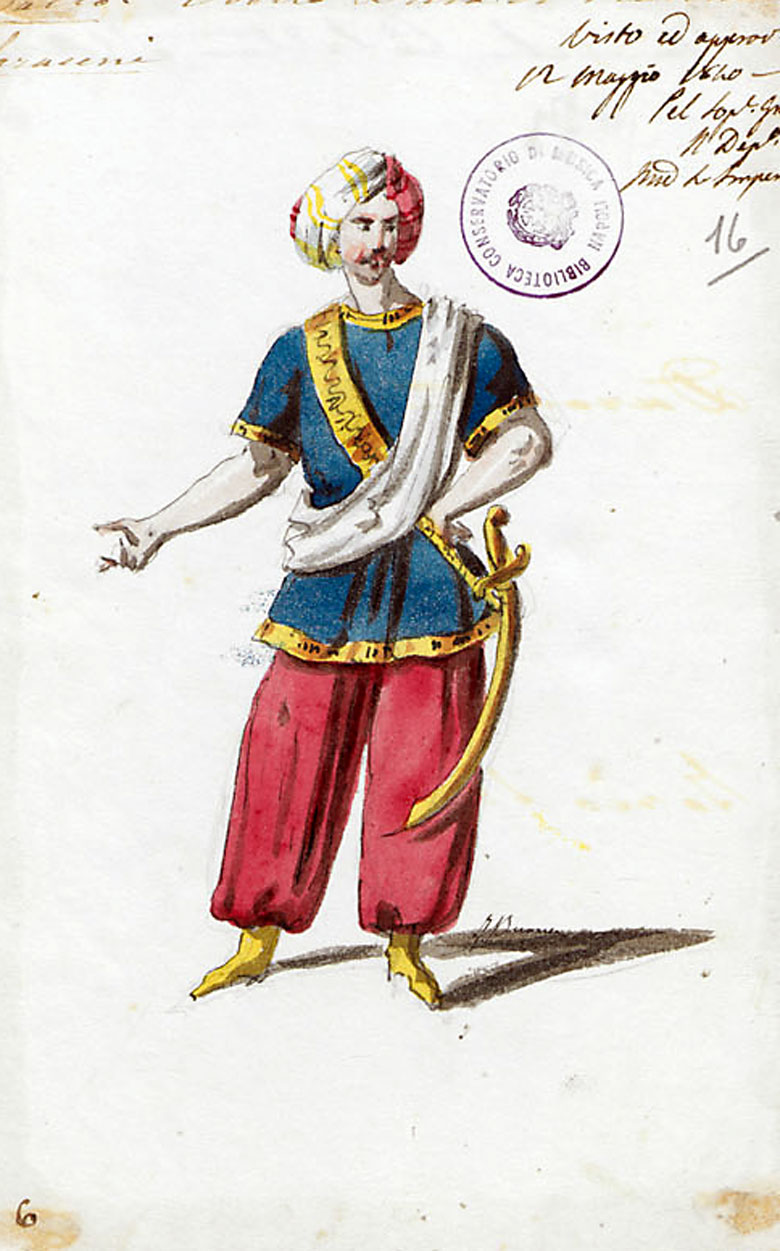
927
927
Destruction by the Saracens.
The assault by the Arabs of Sicily, which led to the destruction of the city, was aimed at depriving the Byzantines of one of the most important ports of their empire. In addition to the devastation, there are reports of the deportation and death of many civilians.Until then, the harbour basins were along the shore of the Mar Piccolo, from the moat up to, and including, the bay of St. Lucia. A Saracen by Filippo Del Buono, 1840 Library of St Peter's Conservatory of Music in Majella - Naples - EN-NA0059 Identification: NA0059_C3-9_F686 www.internetculturale.it
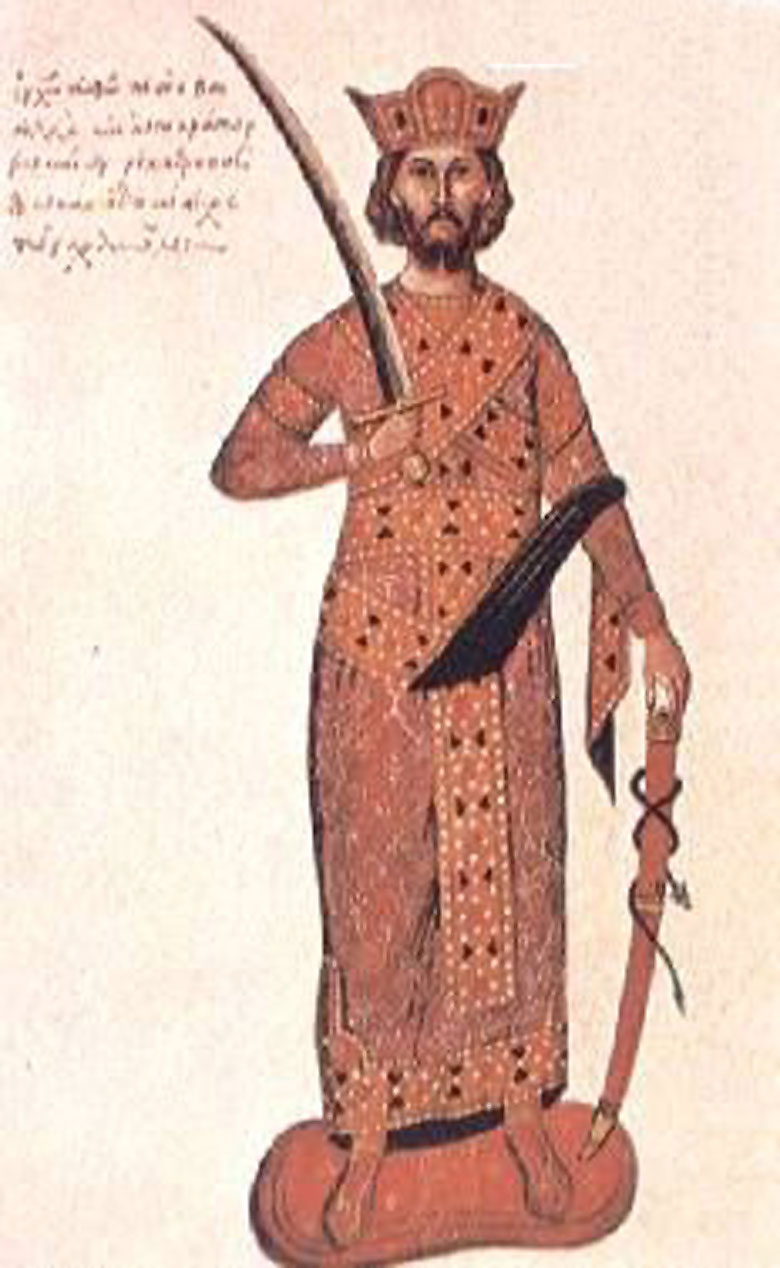
967
967
Reconstruction of the city by Nicephorus Phocas.
Taranto was rebuilt by the Byzantine emperor Nicephorus II Phocas (912-969), but clashes between the Byzantines and Saracens continued for several years. The old city was modified, filling-in the inner areas and levelling-off higher ground. Greeks from Thrace and Cappadocia, Armenians and Russian-Varangians, i.e. Slavs and Vikings, began to settle in Taranto. Nicephorus Phocas (912-969), medieval miniature from Wikipedia - Public domain.7.Norman-Swabian period
7.Norman-Swabian period
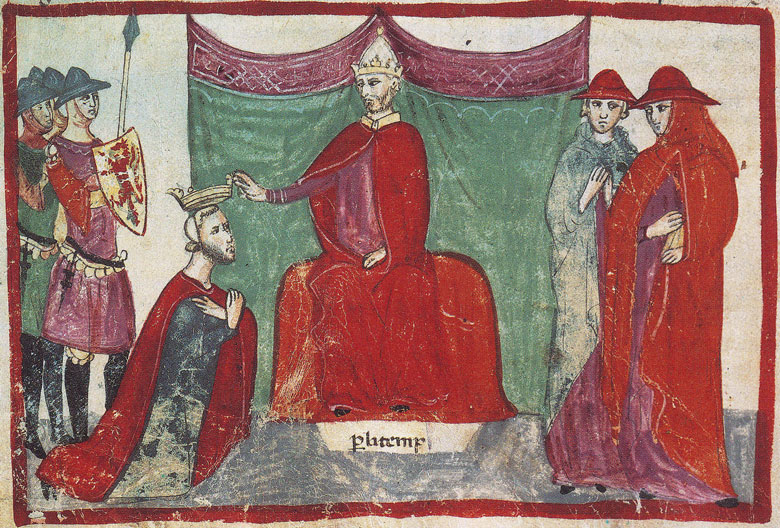
1063
1063
Taranto besieged by Robert Guiscard’s Normans
The siege of Robert Guiscard (1015-1085) is narrated by the chronicler William Appulus in his 'Gesta Roberti Wiscardi' (c. 1095), in which it is said that the Normans 'reached a bridge beaten by the waves of the two seas (today's Porta Napoli bridge), but the presence of large boulders prevented access from the sea and protected the town in such a way that it was not possible to reach it from the bridge and thus to enter the town'. Robert Guiscard appointed Duke of Apulia and Calabria by Pope Nicholas II, miniature from Giovanni Villani's Nuova Cronica (New Chronicle), 14th cent. https://commons.wikimedia.org/wiki/File:Robert_Guiscard_claimed_as_a_Duke.jpg Public domain – wikipedia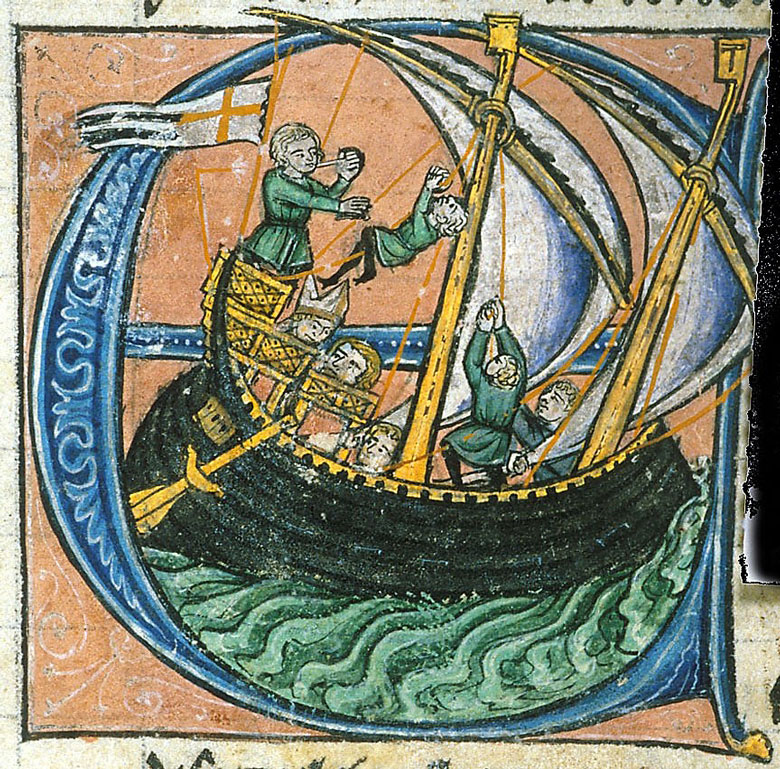
1088
1088
Taranto: Norman principality
Beginning under Bohemond I of Hauteville (1051-1111), the Principality of Taranto lasted until 1463.Prince Bohemond was one of the commanders of the First Crusade. During the Crusades, soldiers embarked from the port of Taranto to liberate the Holy Sepulchre from the Turks. The provisioning of their ships provided an opportunity for economic growth. Bohemond and Daimbert, Patriarchs of Jerusalem, sailing towards Apulia. Miniature from an edition of the History of Outremer (the Crusader States), 13th century. https://commons.wikimedia.org/wiki/File:Bohemond_daimbert.jpg Public domain – wikipedia
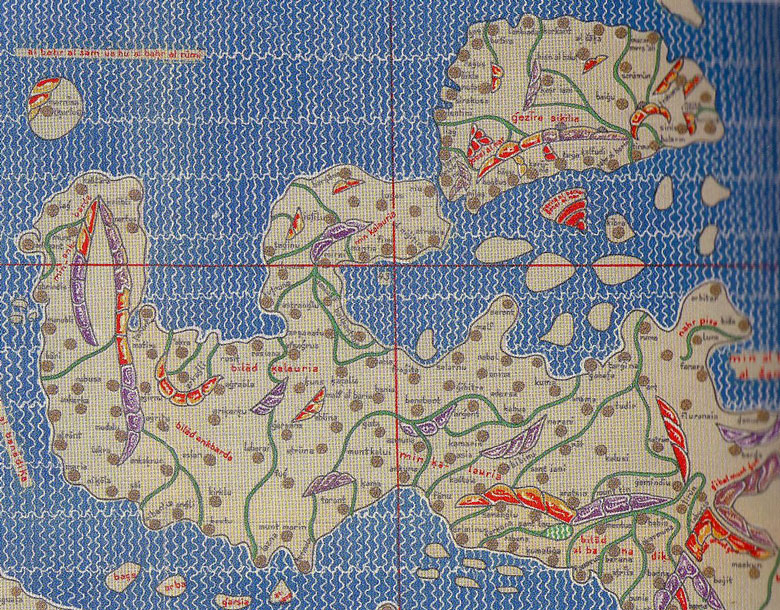
1154
1154
The port of Taranto ''teeming with merchants and travellers''
The Arab geographer and traveller Al Idrisi (1099-1165) describes Taranto as ''a large city of ancient origin, it has beautiful buildings and is teeming with merchants and travellers. This is where ships are loaded, where caravans converge because of the abundance of goods and riches. The city also has a harbour set to the west in the high sea (Mar Grande) and to the north-east it has a lagoon whose curve runs from the bridge to the city gate (Porta Napoli)''. The Tabula Rogeriana (``The Map of Roger``) he drew has the north at the bottom, so the map seems to be upside down. Detail from the Map of Roger, Southern Italy, by Al-Idrisi, 1154. https://commons.wikimedia.org/wiki/File:TabulaRogeriana.jpg Pubblico dominio - Wikipedia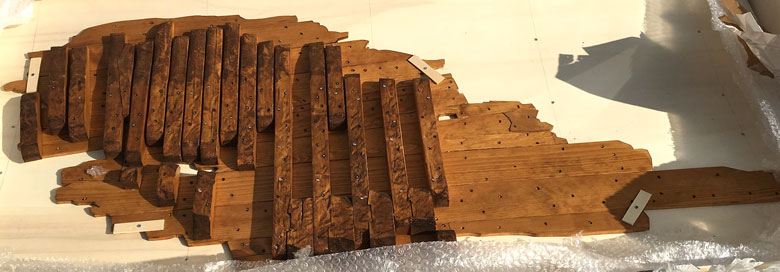
c. 1200
c. 1200
Regulating port areas
The port system was regulated by numerous state and feudal fees paid by merchants and ship captains for imports and exports. They paid landing fees (anchorage and mooring tax, i.e. the possibility of planting poles to moor to or to make use of those already planted), a tax for lighting in ports (lanternage) and also for fishing. Shipwreck discovered near the islet of San Nicolicchio, 16th century. Photo National Superintendency for Underwater Cultural Heritage, Taranto.
c. 1250
c. 1250
In the oldest portolan: 'Taranto is a good port’
The oldest specimen of a portolan, i.e. a practical manual for coastal navigation based on experience and observation, dates back to around 1250. This ancient specimen of a ‘pilot book’ for the Mediterranean Sea is called ‘The Navigational Compass’, was compiled by an anonymous person, possibly of Italian origin, and written in medieval vernacular. Inside it is written: 'Taranto is a good port' and ‘the main island has good anchorage in all winds'. Detail of the Carta Pisana (Pisan Map), pilot book, 1300, National Library of France, Department of Maps and Plans, GE B-1118 (RES) «Source Gallica.bnf.fr/ Bibliothèque nationale de France»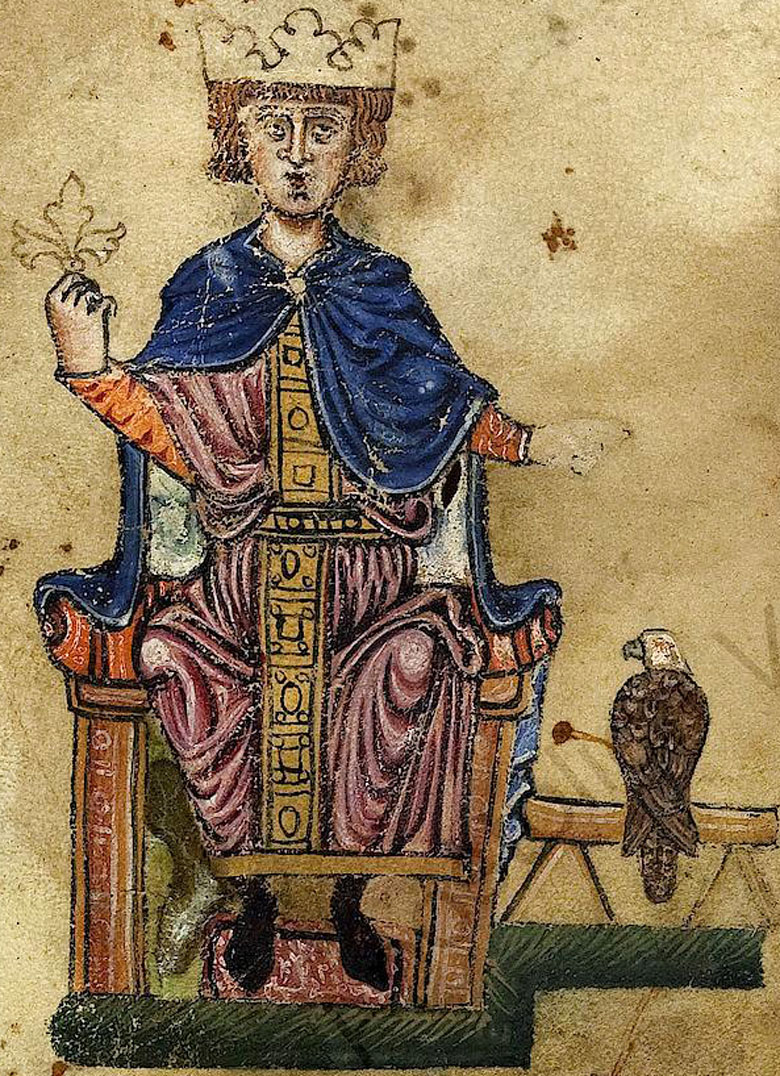
1250
1250
Frederick II's body is embarked on its last voyage in the port of Taranto.
On 28 December 1250, the body of Emperor Frederick II (1194-1250) was embarked on a ship in the port of Taranto bound for Palermo, to be buried in the cathedral next to his mother Constance, father Henry VI and grandfather Roger II. Miniature of Frederick II with a falcon, from his treatise De arte venandi cum avibus (The Art of Hunting With Birds). Manuscript preserved in the Vatican Library, 13th century. https://commons.wikimedia.org/wiki/File:Frederick_II_and_eagle.jpg Public domain, Wikimedia Commons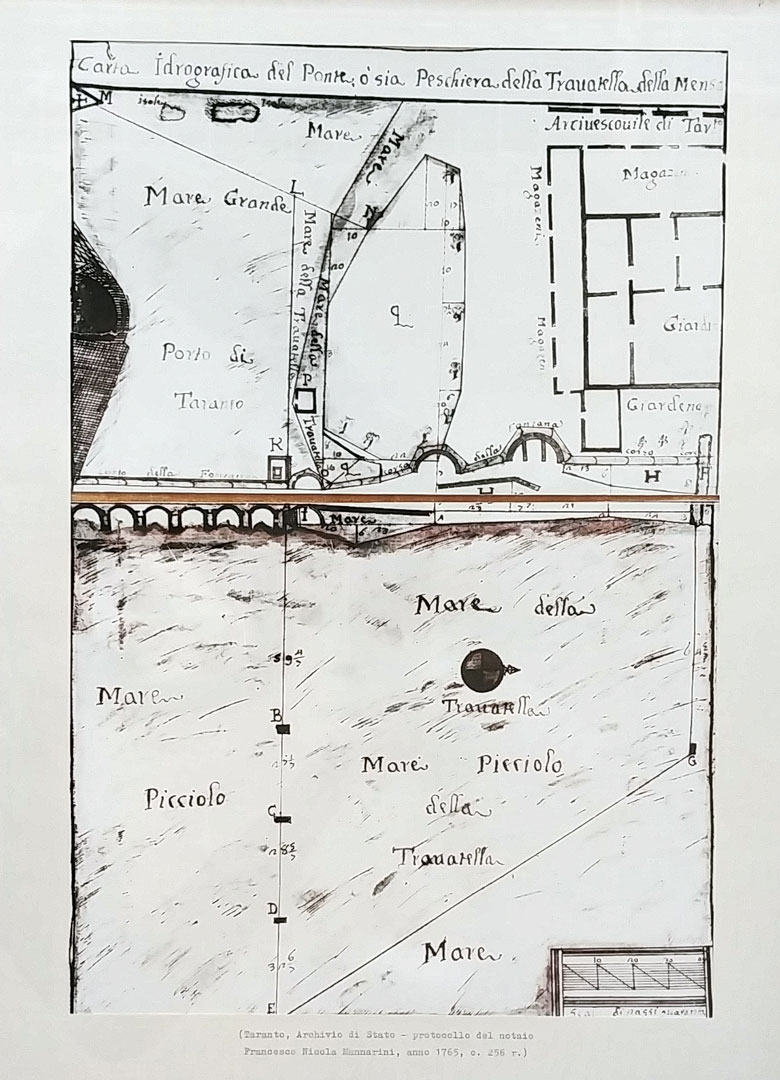
c. 1260
c. 1260
The first fish-farms in Mar Grande and Mar Piccolo
During the Norman-Swabian period in Taranto, there are peschiere, i.e. 'sea lots' of varying width delimited by placing poles with 'as many located in the Mar Grande as in the Mar Piccolo'. These 'peschiere’ were also seen during the 18th century. Drawing of the fisheries in the Mar Piccolo (``Little Sea``), paper by notary Francesco N. Mannarini, 1765, Taranto State Archives.8. Angevin Period
8. Angevin Period
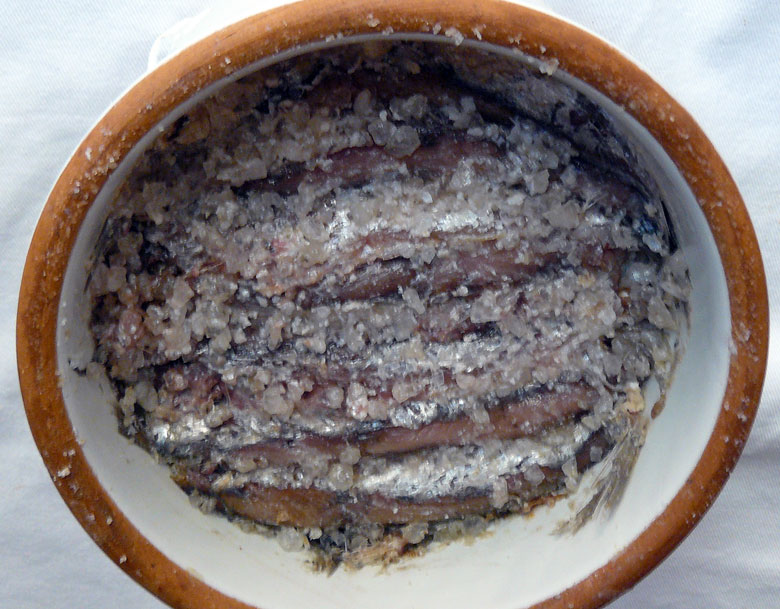
1266
1266
Taranto: early Angevin period.
The preparation and trade of salted fish, in particular salted anchovies, was flourishing, and the markets of the kingdom were supplied from Taranto. The Prince of Salerno Charles II of Anjou (1254-1309) supplied his own table with fish from Taranto, both salted and fresh. Several documents refer to the salt warehouses, an essential element for salting food. Salted anchovies in an earthenware jar. Photo Salvatore Tomai
1270
1270
Route to Tunis.
King Charles of Anjou (1226-1285) gave orders to the overseers of the port of Taranto to allow the merchant Fusco Campanile of Ravello to set sail from the port of Taranto with his ship San Nicola, and to export, without payment of the usual exit fee, certain quantities of flour, wheat, salted meat and various local goods, destined to supply the Franco-Angevin Christian army stationed in Tunis. Charles of Anjou on the deathbed of his brother, King Louis IX of France, in Tunis. 14th century. https://commons.wikimedia.org/wiki/File:Ludva9_Karel.png Public domain, Wikimedia Commons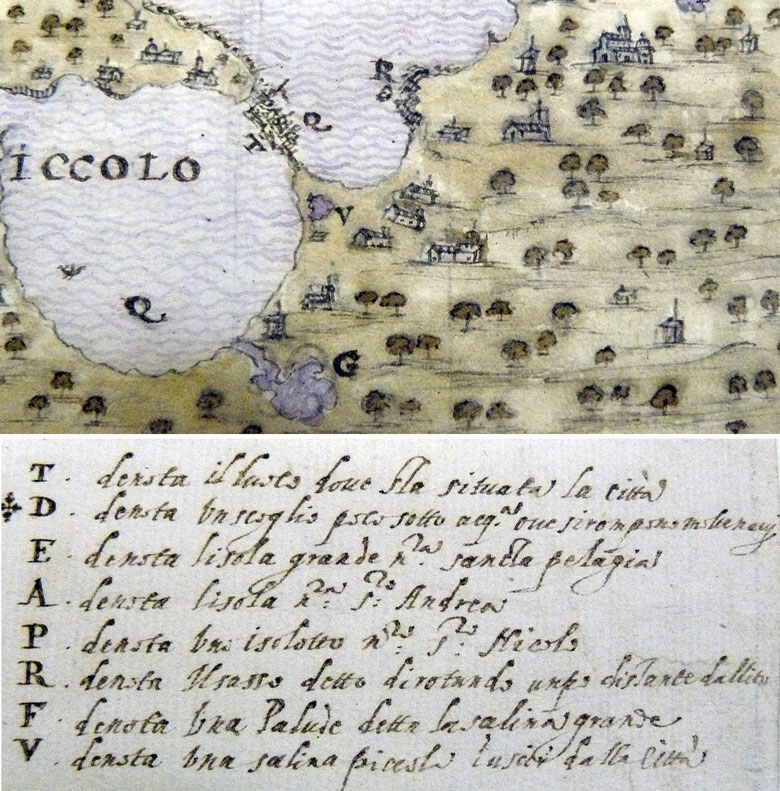
c. 1280
c. 1280
Trade.
Today's Piazza Fontana was the place where commercial transactions, both wholesale and retail, took place. An annual fair was also held there, and documents from the Angevin Chancellery show that the following goods were shipped from the port of Taranto: firewood, construction timber from the woods outside the city, salt produced in the nearby salt pans, the catch (gilthead and mullet above all), but also seafood and textiles.In a 16th-century map, 'a small salt works on the way out of town' is still marked with the letter V.
In una mappa cinquecentesca viene ancora segnalata con la lettera V “una salina piccola in uscir dalla città”. Detailed map of the port of Taranto, c. 1580, Angelica Library Rome. BSNS 56/68.

1284
1284
The fleet biscuit
One of the sailors' staple foods was the so-called fleet biscuit, which could last for months without spoiling, thanks to a special mixture of unrefined flours (the composition of which has been lost). This biscuit, which sailors used to soak in seawater and dress them with olive oil, combining them with onions, radishes, dates and dried figs, is thought to be very similar to today's friselle. In 1284, Taranto bakers produced 1,500 ``cannate`` (=15,000 kg approx.) of the ‘fleet's biscuit’ to supply the crews passing through the port of Taranto. Friselle salentine (of Salento). Photo Salvatore Tomai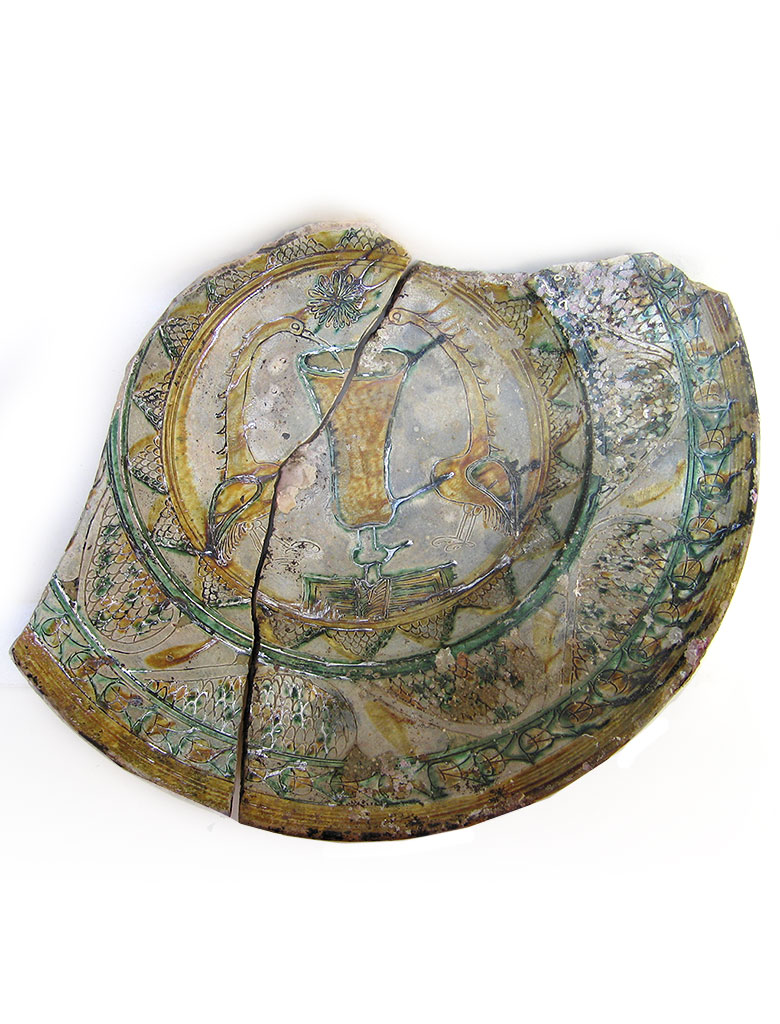
c. 1320
c. 1320
Economic crisis in the Otranto Region; Taranto bucks the trend.
Decreased trade with the East, coupled with the agrarian crisis, led to the bankruptcy of the Florentine bankers who invested in the territory of Otranto. However, the tithes for the Bishopric of Taranto rose from 180 ounces in 1310 to 250 ounces in 1324. From the port of Taranto they exported 'bambagia', cotton produced on the land belonging to the Benedictine monastery of San Pietro Imperiale (today's church of San Domenico). It was the Dominicans who encouraged the cultivation of cotton in the Taranto area. Polychrome sgraffito glazed ceramic dish, 13th - 16th century, found in the port area (2007). Photo National Superintendency for Underwater Cultural Heritage, Taranto.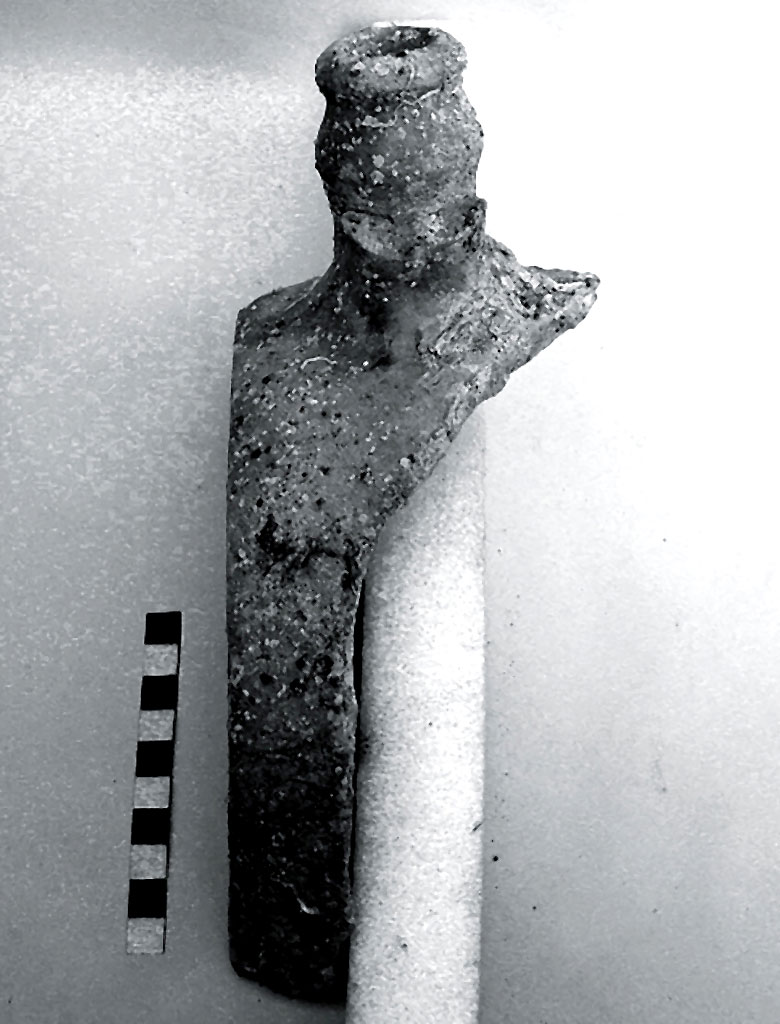
c. 1350
c. 1350
Medieval finds in the harbour
A number of artefacts found near the fourth wharf of the harbour, where the island of San Nicolicchio used to be, date back to this period. A wreck dating back to the post-medieval period, a pilgrim's flask (C14th), a dish/basin (c. C16th) and part of a brown amphora (c. C13th-C16th) were found. Terracotta pilgrim's flask, 14th century. Photo Angelo Raguso, National Superintendency for Underwater Cultural Heritage, Taranto.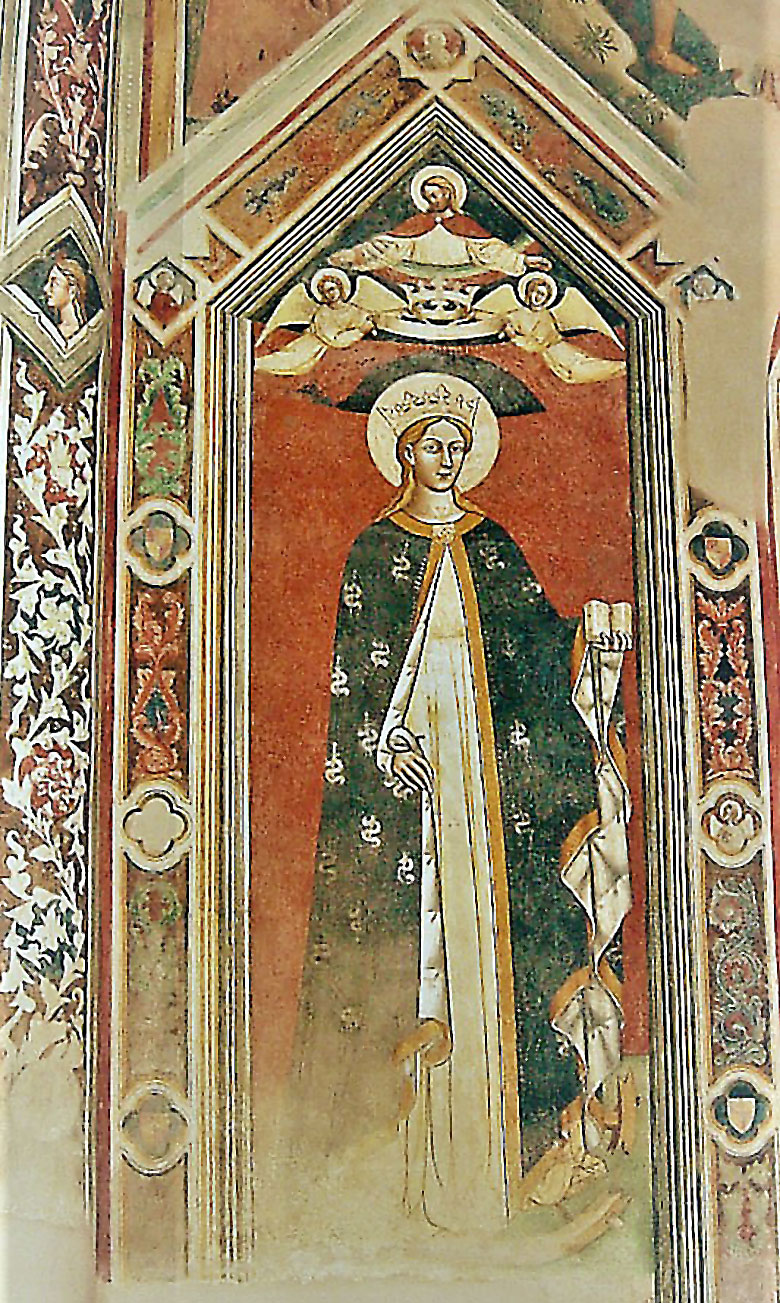
1407
1407


